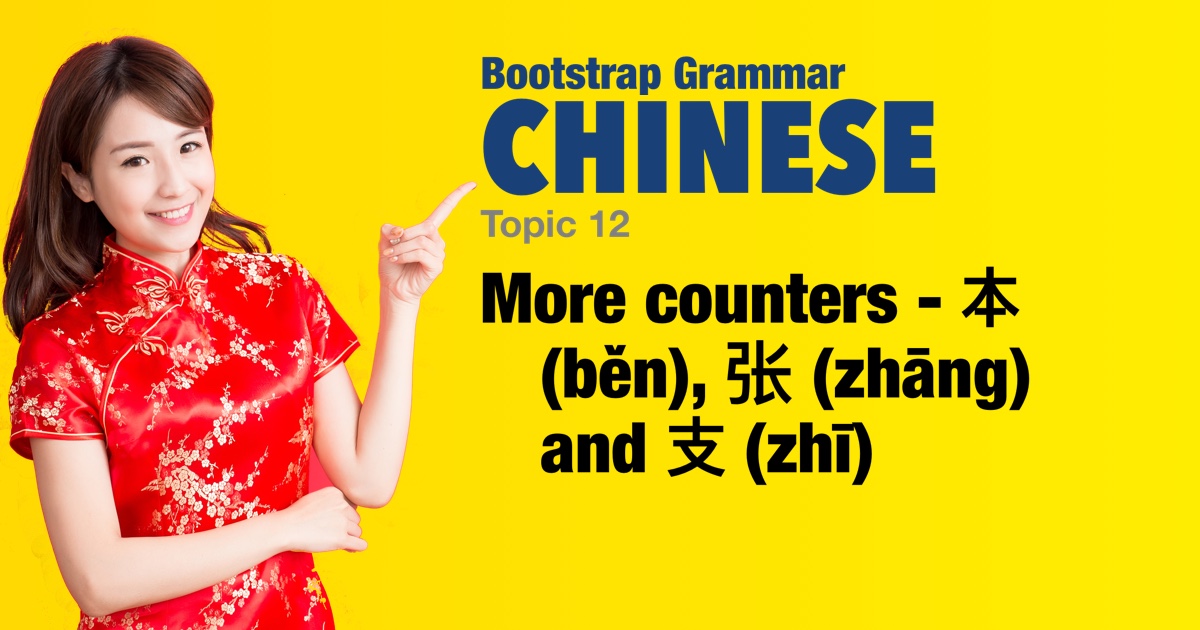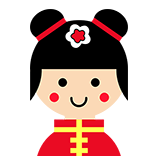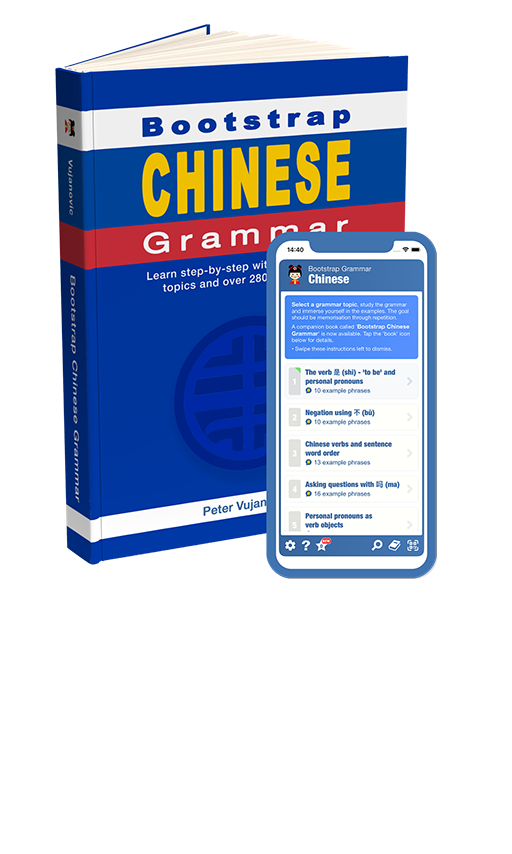Chinese grammar - More counters - 本 (běn), 张 (zhāng) and 支 (zhī) |
|||
|
|||
In Chinese, three more very common counters are 本 (běn), 张 (zhāng) and 支 (zhī). • 本 (běn) is used with bound items like books and notebooks. • 张 (zhāng) is used for flat objects like paper, beds, or tables. • 支 (zhī) is used for long, thin objects like pens or trees. |
| Examples: | |
|
我有一个苹果。
wǒ yǒu yí gè píngguǒ. I have an apple.
|
|
|
他有两本书吗?
tā yǒu liǎng běn shū ma? Does he have two books?
|
|
|
她吃三个橙子。
tā chī sān gè chéngzi. She eats three oranges.
|
|
|
有三个中国人。
yǒu sān gè zhōngguó rén. There are three Chinese people.
|
|
|
没有五个美国人。
méi yǒu wǔ gè měiguó rén. There are not five Americans.
|
|
|
那些是五个柠檬。
nà xiē shì wǔ gè níngméng. Those are five lemons.
|
|
|
没有一张床。
méi yǒu yì zhāng chuáng. There is not a bed.
|
|
|
你没有一张纸吗?
nǐ méi yǒu yì zhāng zhǐ ma? Don't you have a/one sheet of paper?
|
|
|
我有一支筷子。
wǒ yǒu yì zhī kuàizi. I have one chopstick.
|
|
|
他看一张地图。
tā kàn yì zhāng dìtú. He is looking at a map.
|
|
|
她有没有二十张纸?
tā yǒu méi yǒu èrshí zhāng zhǐ? Does she have 20 sheets of paper? |
|
 |
|




